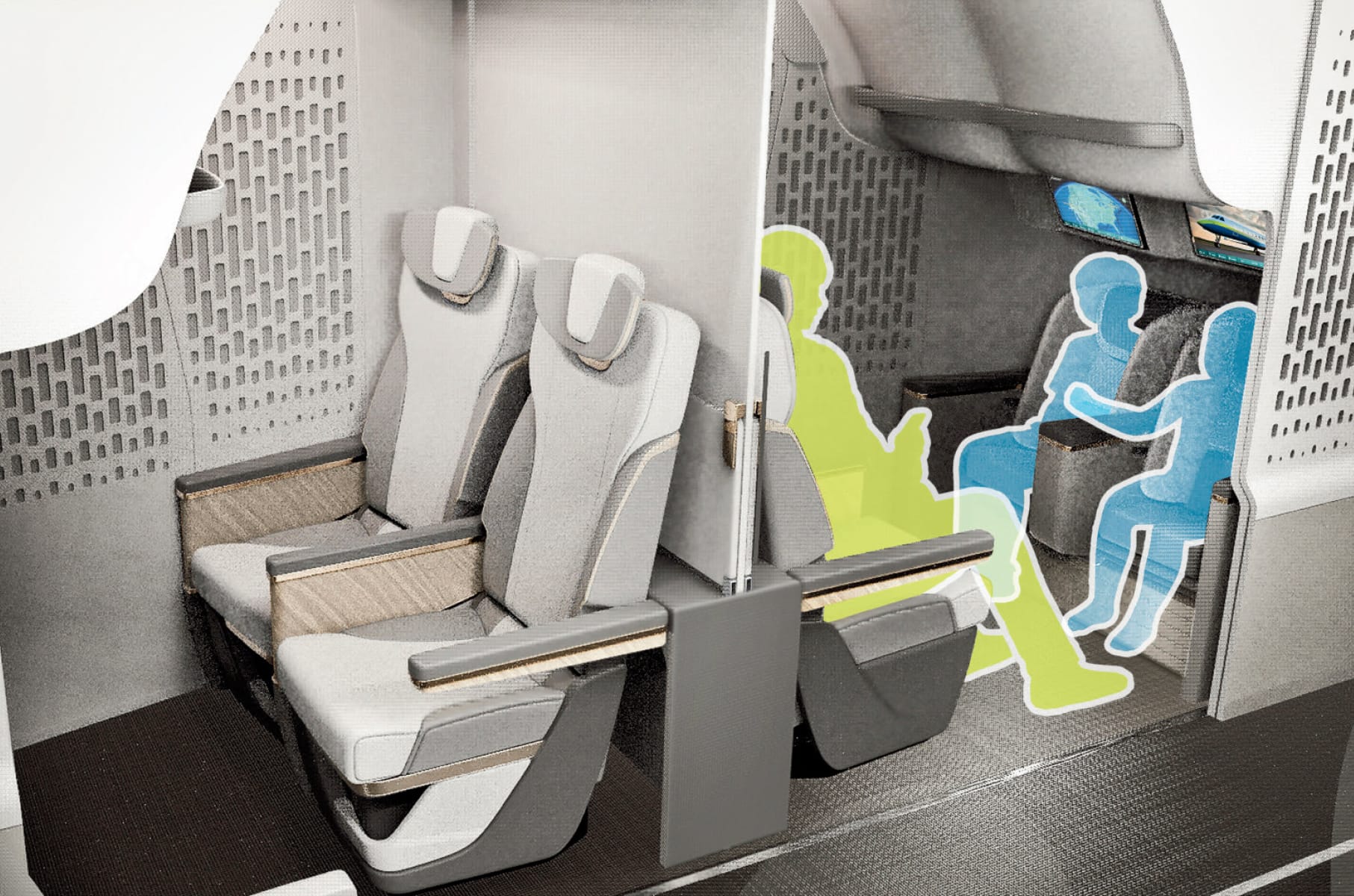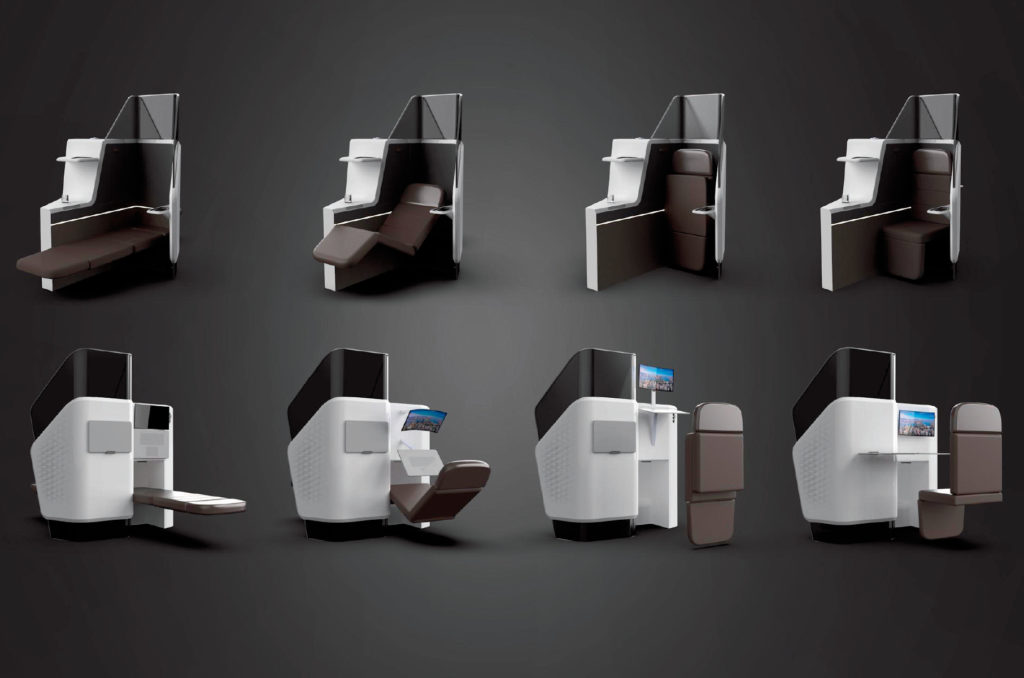Business travelers could soon benefit from innovative concepts that address the ergonomic challenges associated with getting work done at altitude.
However sumptuous premium suites are when flying ultra long-haul, the temptation to emerge from the cocoon, network with fellow travelers and work in the vicinity of others in an age of shared workspaces persists. Stretching one’s legs is a step in the right direction in terms of alleviating muscle tension and promoting good blood circulation on longer flights, but working in a shared cabin zone presents privacy issues for businesspeople handling sensitive information.
It’s a conundrum that AIM Altitude has sought to address with its Ultraflex cabin concept: “We’ve been looking at how to introduce a walled-off working area where you have privacy,” explains Ross Burns, group lead industrial designer at AIM Altitude. The company realized there was an opportunity to enable passengers to work discreetly in a shared cabin environment while simultaneously allowing for some light exercise. Ultraflex builds on AIM’s expertise in engineering the social zones of Emirates’ Airbus A380s, Qatar Airways’ A380s and Virgin Atlantic’s A330s, and offers a “multifunctional destination area where passengers move around, interacting with activities and each other, to alleviate boredom and aid well-being,” according to the company website.
But that doesn’t mean working up a sweat: “It’s not going to be a gym, although we were aware that Qatar and Emirates were promoting yoga on their IFE [in-flight entertainment]. We were thinking how to introduce light exercises to get the blood flowing by having an area where you carry on working while your body exercises in the background.” AIM’s solution offers outboard-facing work cubicles equipped with cranks, pedals, muscle rollers and resistance pads which, Burns says, help “blood flow through calves and keep your lower body moving – it’s all about motion and circulation.”

In a separate project, Crystal Cabin Award-winning design student Sahngseok Lee of Hongik University, in Seoul, came up with the “1FA” (one for all) concept, sponsored by Adient Aerospace. “I got the idea from personal experience,” says Lee. “Working with my laptop in flight, I was concerned if anyone saw my screen. Even with privacy screens in the latest business-class products, there’s still the risk of confidential-information leaks. Also, when you want to discuss business with colleagues during a flight, you wouldn’t want anyone else to hear your conversation. Only a fully enclosed space resolves these issues.”
The 1FA concept reconciles the real estate constraints of premium economy with the potential for an enclosed room for face-to-face seating, making private business meetings a possibility. “If you want absolute privacy for family or work, with this premium economy compartment, two parents and two kids can fly in a fully enclosed bedroom, at the price of four economy seats,” says Lee.

Another approach, the Stratus seat, a collaboration between Safran Seats and a TU Delft design team, offers the option of a standing position (in line with trending standing-desk workspaces) as well as zero-gravity seating, to alleviate muscle fatigue and promote blood flow.
“We aimed to bring office comforts to business passengers, enabling them to make the best use of their time, providing an activity-based environment optimized for working.” – Clément Heinen, industrial designer
“We aimed to bring office comforts to the business-class cabin, enabling passengers to make the best use of their time – be it for work or rest,” says Clément Heinen, an industrial designer and former student at TU Delft, who was part of the team that conceived the idea. Safran provided VR tools to visualize interactions, spatial qualities and dimensions, and the team based the Stratus seat on feedback gleaned from conversations with travelers at the departure hall of Amsterdam Airport Schiphol. “After interviewing people who traveled for work, we found that although there’s plenty of time on long-haul flights, the context isn’t always suitable for working,” Heinen says. “We tried to give business travelers the peace of mind that comes from knowing they’ll be able to get work done and arrive at their destination feeling well-prepared.”
Addressing privacy concerns, the cabin includes screens that, Heinen says, “switch between translucent and opaque.” During boarding, screens are clear, but in flight they can be made opaque. “We want to ensure business-class travelers get the privacy they need,” he adds.
“Work in Progress” was originally published in the 9.4 September/October issue of APEX Experience magazine.


